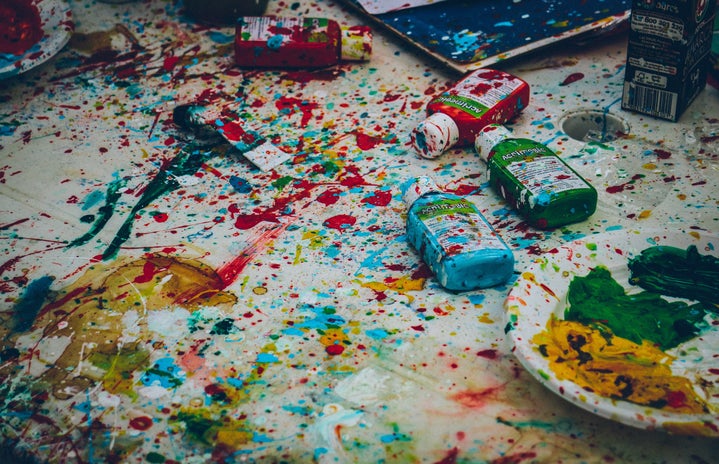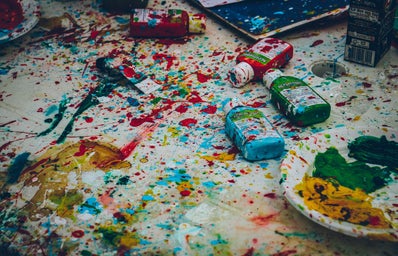With the internet being so easy to access, it has become easier for independent artists to find an audience and let their work be known. As a result, a variety of movements, collectives, and scenes have found a way to pave their path. The independent art scene in Puerto Rico is no different. Recently, many artists from a variety of disciplines have found platforms that have made it easier for them to share their work. In addition, small businesses such as Electroshock in Santurce and Rio Piedras, bars like Off The Wall in Mayaguez, book stores like La Casita Books and Gifts in Aguadilla, Libros AC in Santurce and Libros 787 online, and independent festivals like Feria de Libros Independientes y Alternativos and Tintero: Festival de Cómics y Arte Independiente de Puerto Rico have provided up-and-coming artists a space to display their talents. “Puerto Rican Women Killing It in the Independent Art Scene” is a series of interviews that provides a glimpse at some of the women who have recently gained recognition in the art scene. Though the artists are asked similar questions, some are asked queries surrounding their work, specifically.
What’s your name and what do you do in the arts?
My name is Gabi Pérez-Silver and I photograph things and faces that catch my attention. You can see a visual diary of my encounters on Instagram.
What got you into the digital arts?
Well, I was born in the digital era, but formally speaking, I grew up around cameras. My parents have been a part of the film industry for as long as I can remember, and I don’t recall ever not interacting with a camera. Growing up as an only child, I spent a lot of time by myself. I made my camera my designated travel buddy. I explored the world and my curiosities through a little black box. My camera has always functioned as a buffer, a helmet, and a safety net.
How did you develop your style?
It has taken me years to pick up on the patterns, but my photography is a portrayal of how I interact with the world. I photograph what I feel, not what I see. If I find myself in a situation that I have an intimate connection with, for whatever reason, I must photograph it. There is a recurrent theme in my work and that is mystery, subtlety, and nostalgia, and this is typically inspired by direct observation and involvement with my subject. It is their subtle gestures that bring the images to full fruition; it is at the moment of clicking the shutter that both of our voices meet, and the dialogue between the artist and subject is found. It’s difficult now, with social media, especially Instagram, not to compare your work to others, or try to imitate something that strikes your fancy. When I realized that my best work came from the heart, I didn’t let that go.
How has it evolved through the years?
Eight-ish years ago I moved from Puerto Rico to upstate New York. It was my first time living through the four seasons, and a wonderful opportunity to explore natural light during different climates. My favorite light is that of a winter afternoon, around 4:40pm. It’s warm, crisp, and perfect. It wasn’t until I began studying the positions of the sun throughout the day, that I developed an obsession with shadows, which have become my favorite tool to work and play with.
What are some of your influences and inspirations?
Without a doubt, Edward Hopper, William Eggleston, and Christopher Anderson, are my greatest influences. There is a peculiar style in all of these works that just blow me away. I remember the first time I attended a William Eggleston exhibition at David Zwirner gallery in NYC. There was a quote mounted on the wall in vinyl lettering by Eggleston that stated, “I don’t have a burning desire to go out and document anything. It just happens when it happens. It’s not a conscious effort, nor is it a struggle. Wouldn’t do it if it was. The idea of the suffering artist has never appealed to me. Being here is suffering enough.” It really resonated with me and my work. A few months later, I read an article on the Magnum Photos website; an interview with Christopher Anderson. I had always felt really connected to Anderson’s work because the way he utilizes natural light is so visually appealing and well, natural, and I’m all about that. In the interview Anderson states, “The act of photography is part of my interface with the world. It is part of how I explain the world to myself. My photography is fundamentally about my experience. So it is important to me in the same way that sleeping is important to dreaming.” To this day I have not found more perfect words to describe the way I see life and photography; for me, they are just one.
Is there any other form of art you wish to pursue? If so, what field and why?
I have always admired illustrators and painters. As a photographer, it is relatively easy to capture a thing with a camera, but to be able to create something from scratch with a pencil or a brush, that to me, is absolutely fascinating! Apart from drawing, music has always swept me off my feet. There’s something so supernatural about making an audience feel connected through sounds. If I picked up an instrument, it would probably be the harmonica; it melts my heart every time.
What do you think about the current state of the arts in Puerto Rico?
The leaders of Puerto Rico don’t necessarily prioritize art, but local artists prioritize art, and that’s why we’ve seen a drastic turnover throughout the past couple of years. There is a definite initiative to bring people together through art exposure, particularly street murals. If a wider audience got involved, perhaps more opportunities would arise for artists.
What do you think about the current state of the independent scene in Puerto Rico?
I really admire the independent scene in Puerto Rico. I witnessed a lot of businesses close down after Hurricane Maria. Yet, so many artists and local shop owners gave it their all and sprung back on their own two feet. The independent scene in Puerto Rico is the definition of resilience.
If a young girl came up to you and said she wanted to be an artist, what would be your advice for her?
Find a craft that speaks to you, and really pursue it. Don’t stop practicing that craft, no matter how many times it receives rejection. Work from the heart, and it will surely develop an audience that connects with your work. Creating a space where others come together through your art is truly inspiring.
What is your biggest goal right now?
My biggest goal is to enjoy the process. Once you reach the goal, that’s it, the fun’s over.
What do you seek to achieve with your work?
I want my work to evoke memories, just like those that flash before your eyes after smelling, hearing, touching, or tasting a certain something. I want to take my audience back to a moment in time.
All of the pictures in this article were provided by Gabi Pérez-Silver


